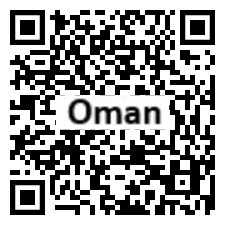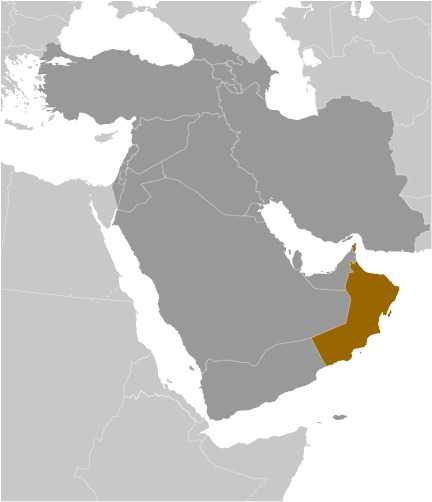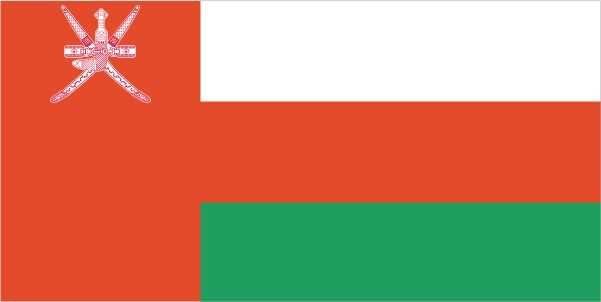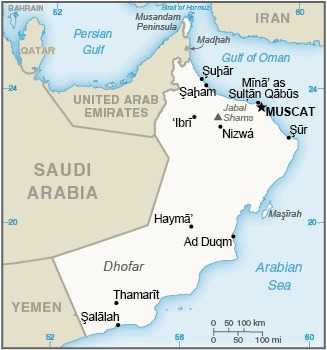Introduction
Background
The inhabitants of the area of Oman have long prospered from Indian Ocean trade. In the late 18th century, the nascent sultanate in Muscat signed the first in a series of friendship treaties with Britain. Over time, Oman's dependence on British political and military advisors increased. In 1970, QABOOS bin Said Al-Said overthrew his father, and during his 50-year rule ushered Oman into the modern age.
Geography
Area
total: 309,500 sq km
land: 309,500 sq km
water: 0 sq km
Climate
dry desert; hot, humid along coast; hot, dry interior; strong southwest summer monsoon (May to September) in far south
Natural resources
petroleum, copper, asbestos, some marble, limestone, chromium, gypsum, natural gas
People and Society
Population
total: 3,901,992
male: 2,096,126
female: 1,805,866 (2024 est.)
Ethnic groups
Arab, Baluchi, South Asian (Indian, Pakistani, Sri Lankan, Bangladeshi), African
Languages
Arabic (official), English, Baluchi, Swahili, Urdu, Indian dialects
Religions
Muslim 85.9%, Christian 6.4%, Hindu 5.7%, other and unaffiliated 2% (2020 est.)
Population growth rate
1.75% (2024 est.)
Government
Government type
absolute monarchy
Capital
name: Muscat
Executive branch
chief of state: Sultan and Prime Minister HAITHAM bin Tarik Al Said (since 11 January 2020); note - the monarch is both chief of state and head of government
head of government: Sultan and Prime HAITHAM bin Tarik Al Said (since 11 January 2020)
Legislative branch
description: bicameral Council of Oman or Majlis Oman consists of:
Council of State or Majlis al-Dawla (87 seats including the chairman; members appointed by the sultan from among former government officials and prominent educators, businessmen, and citizens; members serve 4-year term)
Consultative Assembly or Majlis al-Shura (90 seats; members directly elected in single- and 2-seat constituencies by simple majority popular vote to serve renewable 4-year terms)
Economy
Economic overview
high-income, oil-based economy; large welfare system; growing government debt; citizenship-based labor force growth policy; US free trade agreement; diversifying portfolio; high female labor force participation
Real GDP (purchasing power parity)
$161.712 billion (2022 est.)
$155.028 billion (2021 est.)
$150.378 billion (2020 est.)
Real GDP per capita
$35,300 (2022 est.)
$34,300 (2021 est.)
$33,100 (2020 est.)
Agricultural products
dates, tomatoes, milk, sorghum, vegetables, goat milk, cucumbers/gherkins, chilies/peppers, watermelons, cantaloupes/melons (2022)
Industries
crude oil production and refining, natural and liquefied natural gas production; construction, cement, copper, steel, chemicals, optic fiber
Exports
$69.701 billion (2022 est.)
$46.572 billion (2021 est.)
$35.691 billion (2020 est.)
Exports - partners
China 40%, India 11%, South Korea 6%, UAE 4%, US 4% (2022)
Exports - commodities
crude petroleum, natural gas, refined petroleum, fertilizers, semi-finished iron (2022)
Imports
$46.326 billion (2022 est.)
$37.216 billion (2021 est.)
$33.827 billion (2020 est.)
Imports - partners
UAE 27%, Saudi Arabia 11%, India 10%, China 9%, Qatar 5% (2022)
Imports - commodities
refined petroleum, cars, iron ore, milk, iron pipes (2022)
Exchange rates
Omani rials (OMR) per US dollar -
Exchange rates:
0.385 (2022 est.)
0.385 (2021 est.)
0.385 (2020 est.)
0.385 (2019 est.)
0.385 (2018 est.)
Page last updated: Tuesday, May 07, 2024




